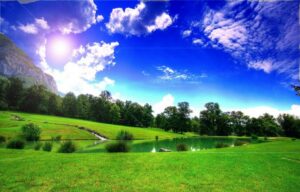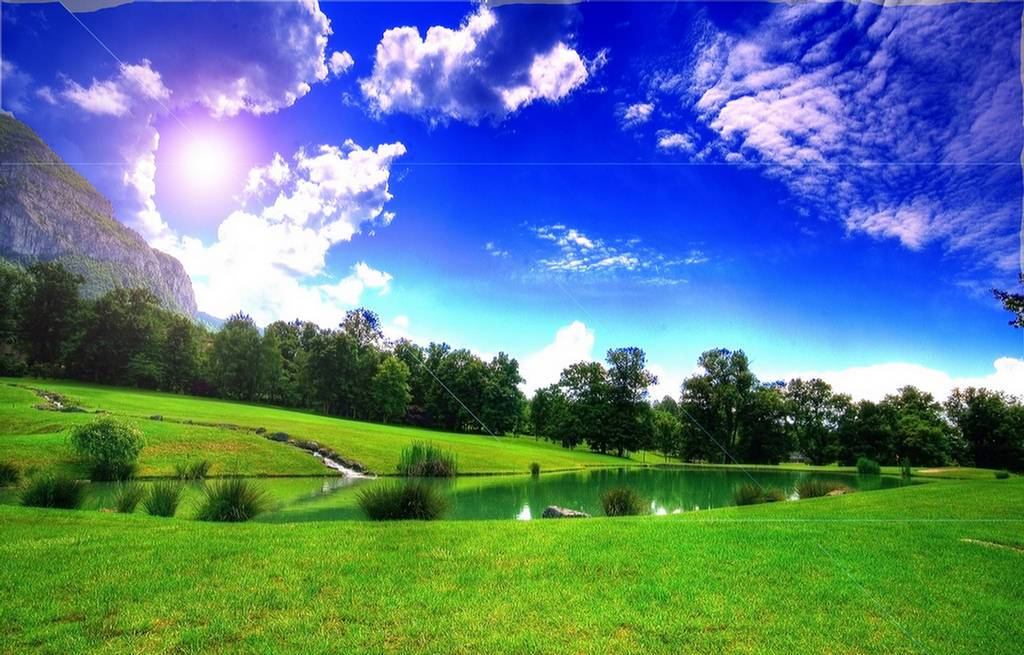
According to Richard Louv, in his book, The nature principle, “Reconnecting to nature, nearby and far, opens new doors to health, creativity, and wonder.” Florence Williams, in her book, The nature fix, adds “Our nervous systems are built to resonate with set points derived from the natural world.”
John Ratey and Richard Manning, in their book, Go wild: free your body and mind from the afflictions of civilization, state “Modern lifestyles disconnect people from nature, and this may have adverse consequences for the well-being of both humans and the environment.” Eva Selhub and Alan Logan, in their book, Your brain on nature, say that “Less contact with nature appears to remove a layer of protection against psychological stress and opportunity for rejuvenation.” And also, that “nature deprivation may have wide-ranging effects on the immune system.”
Sian Beilock, in her book, How the body knows its mind, reports that “research has found links between greenspace and a safe home life,” and that, “natural surroundings are tied to enhanced working memory, which translates into increased concentration and self-control.” She also mentions that city dwellers are at a 20% increase risk for developing anxiety disorders and a 40% increased risk for mood disorders compared with people who live in less populated areas.
Consider the impact of nature, whether in the form of green space, gardens or parks, on the health and well-being of individuals. According to the June, 2016 issue of Scientific American Mind, “exposure to natural settings has been linked with a vast array of human benefits, from reduced rates of depression to increased immune functioning.”
Researchers have also found that plants act as vacuum cleaners removing pollution from the air. Exposure to indoor and outdoor pollutants in both home and offices has been linked to anxiety, depression, irritability, fatigue and short and long-term cognitive decline among other afflictions.
Recent studies have found that urban green spaces improve cognitive development in children, and those close to park land had better memory development, attentiveness and creativity.
As mentioned in an earlier blog, since moving to the country over seven months ago, and experiencing chipmunks eating from my hand, and woodpeckers, mourning doves and chickadees waiting patiently for me to replenish the birdfeeders, it gave me a new perspective on life and the management of time. Like the trees, the birds seem to be in no hurry. And why should they be? Should we live at the pace we do? The faster we go, the faster life seems to go. Perhaps we should slow down, spend more time outdoors, and enjoy the ride.
My new appreciation for the environment prompted one of my ebooks, The impact of working environment on personal productivity, published by Bookboon.com. And it has also confirmed that we should be our environment’s friend, not its predator.
I can’t begin to explain how invigorating I find my morning walks, the view of trees and rolling hills, grazing cattle and trout streams where you can easily catch your limit in an hour. I marvel at the beauty of nature. And I want my grandchildren to experience it as well.
If we continue our disrespect – or should I say our assault – on nature, our grandchildren may not always have that choice. As Thomas Friedman say in his latest book, Thank you for being late, “If you don’t have a forest, you don’t have trees to soak up the carbon. If you don’t have trees to soak up the carbon, it goes into the atmosphere and intensifies global warming or into the oceans and changes their composition. The natural species loss rate is one species or less per year out of every 1 million species. We are now losing somewhere between 10 and 100 species per million species per year.” He goes on to say, “The scientists estimate that we must maintain around 75% of the Earth’s original forests. We are now down to 62%, and some forests are showing signs of absorbing less carbon.”
I have included a bibliography at the end of this article and you can read for yourself his comments on the acidification of the oceans, the blocking of sunlight and other assaults on nature such as “the hundreds of millions of tons of cement we’ve poured across the earth’s surface,” and draw your own conclusions.
Reading such books as The Hidden life of trees and The genius birds has given me an appreciation of nature. Take trees for example. If you want to survive to a ripe old age you might take a lesson from them. One of the oldest trees on earth, according to Tim Flannery, who wrote the forward to the “trees” book, is a 9500 year old spruce tree in Sweden. That’s a little extreme; but trees tend to survive for reasons that could be familiar to some of us.
First, they tend to live at a slower pace, with electric impulses travelling through their roots (one of the ways and they communicate with other trees) at only one third of an inch per second. Other functions are equally slow. They seem oblivious to our digital age of speed.
Trees are also community minded, caring for one another, thriving on relationships with other trees in the forest, and having stunted growth and shorter lifespans if isolated in a field or transplanted to a garden. They show concern for other trees and for future generations, passing on life-giving sugar and nutrients by way of their roots to other trees in trouble. They have even been known to nourish the stump of a felled tree for centuries after it had been cut down. Do we have such compassion?
More and more we are hearing about the benefits of nature, and yet more and more we are hearing about our decreasing connection with nature.
The major hurdle to spending more time outdoors, besides our attraction to the cities, is our love affair with the digital world. As Friedman noted, “the rate of technological change is now accelerating so fast that it has risen above the average rate at which most people can absorb all these changes.”
And although TV is a time-saving baby sitter for parents, it could be a health hazard for the kids. According to Kaiser Family Foundation research, children between the ages of 8 and 18 spend more than 7½ hours a day in front of screens (including TV, computer and smart phone.) This study did not include time spent doing homework on a computer. This has been shown to result in a greater risk of obesity, sleep problems and aggressive behavior – besides the added disadvantage of not having time to fully experience the benefits of nature.
One family, featured in a Canadian Press article appearing in the June 3, 2017 issue of telegraph Journal.com, are attempting to follow the Canadian guidelines that kids younger than two years old should completely avoid screen time. No smart phones or tablets for the kids. And when the parents have to use their own cell phones, they leave the room. It wasn’t always easy, they claim, but now almost 4 years old, their boys spend more time playing outside and reading books instead of staring blankly at screens.
According Florence Williams, in her book, The nature fix, American and British children today spend half as much time outdoors as their parents did.” And I can’t help wondering how much time the parents spend outdoors. Personally, I intend to take advantage of the outdoors while it (and I) are still here.
Bibliography:
Ackerman, Jennifer. Genius of birds. Place of publication not identified: Constable, 2017. Print.
Beilock, Sian. How the body knows its mind: the surprising power of the physical environment to influence how … you think and feel. Place of publication not identified: Atria , 2016. Print.
Friedman, Thomas L. Thank you for being late: an optimists guide to thriving in the age of accelerations. New York: Farrar, Straus and Giroux, 2016. Print.
Louv, Richard. The Nature Principle: Reconnecting with Life in a Virtual Age. Chapel Hill: Algonquin of Chapel Hill, 2012. Print.
Ratey, John J. Go wild: free your body and mind from the afflictions of civilization. New York, NY: Little, Brown and Co., 2014. Print.
Selhub, Eva M., and Alan C. Logan. Your brain on nature: the science of natures influence on your health, happiness, and vitality. Toronto: HarperCollins Publishers, Ltd., 2014. Print.
Williams, Florence. The nature fix: why nature makes us happier, healthier, and more creative. New York: W. W. Norton & Company, 2017. Print.
Wohlleben, Peter. Hidden life of trees. S.L.: William Collins, 2017. Print.


Recent Comments